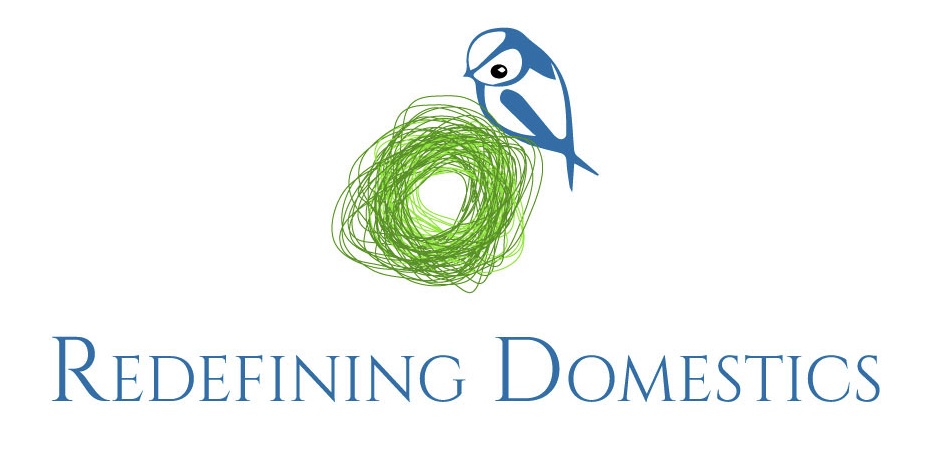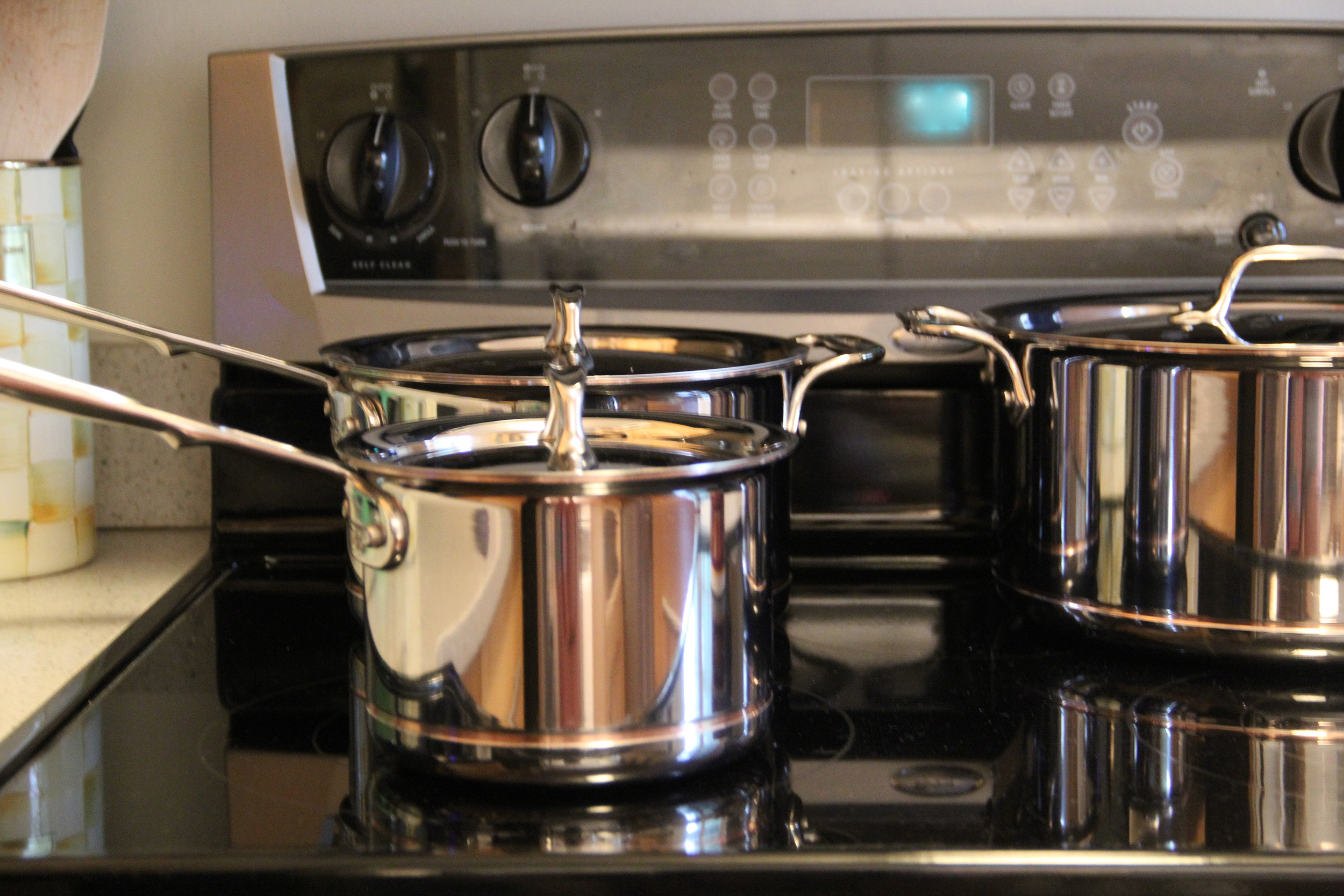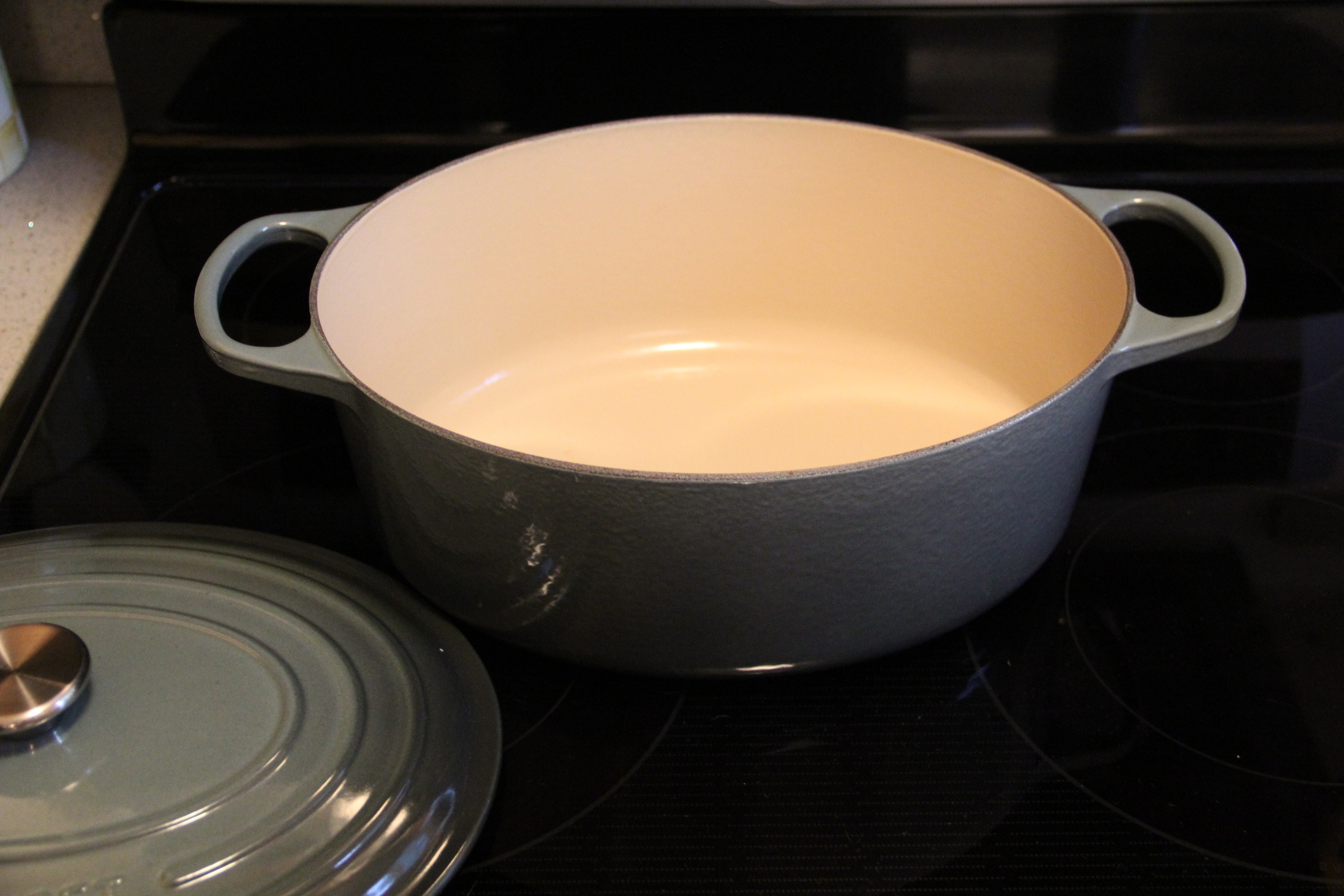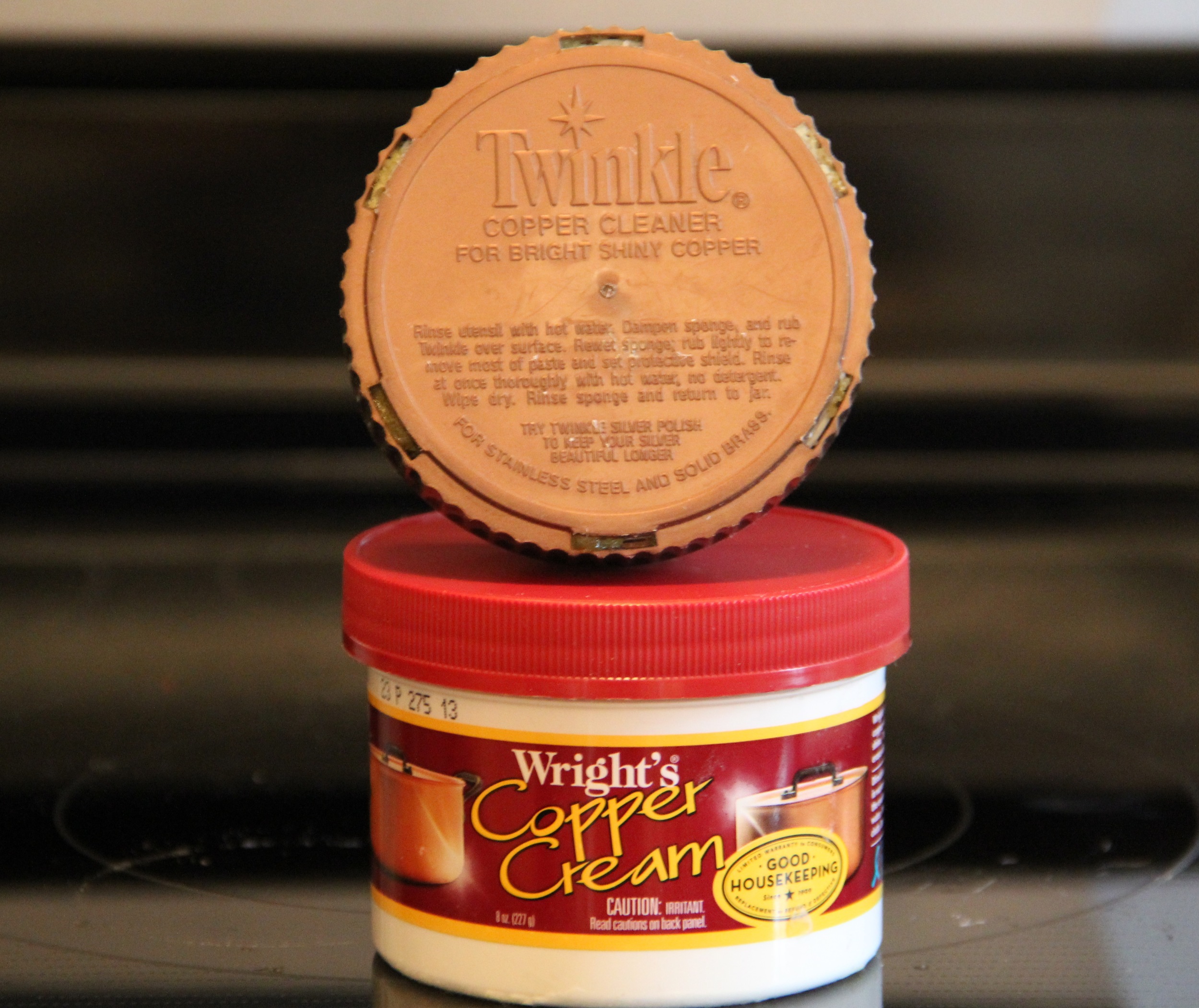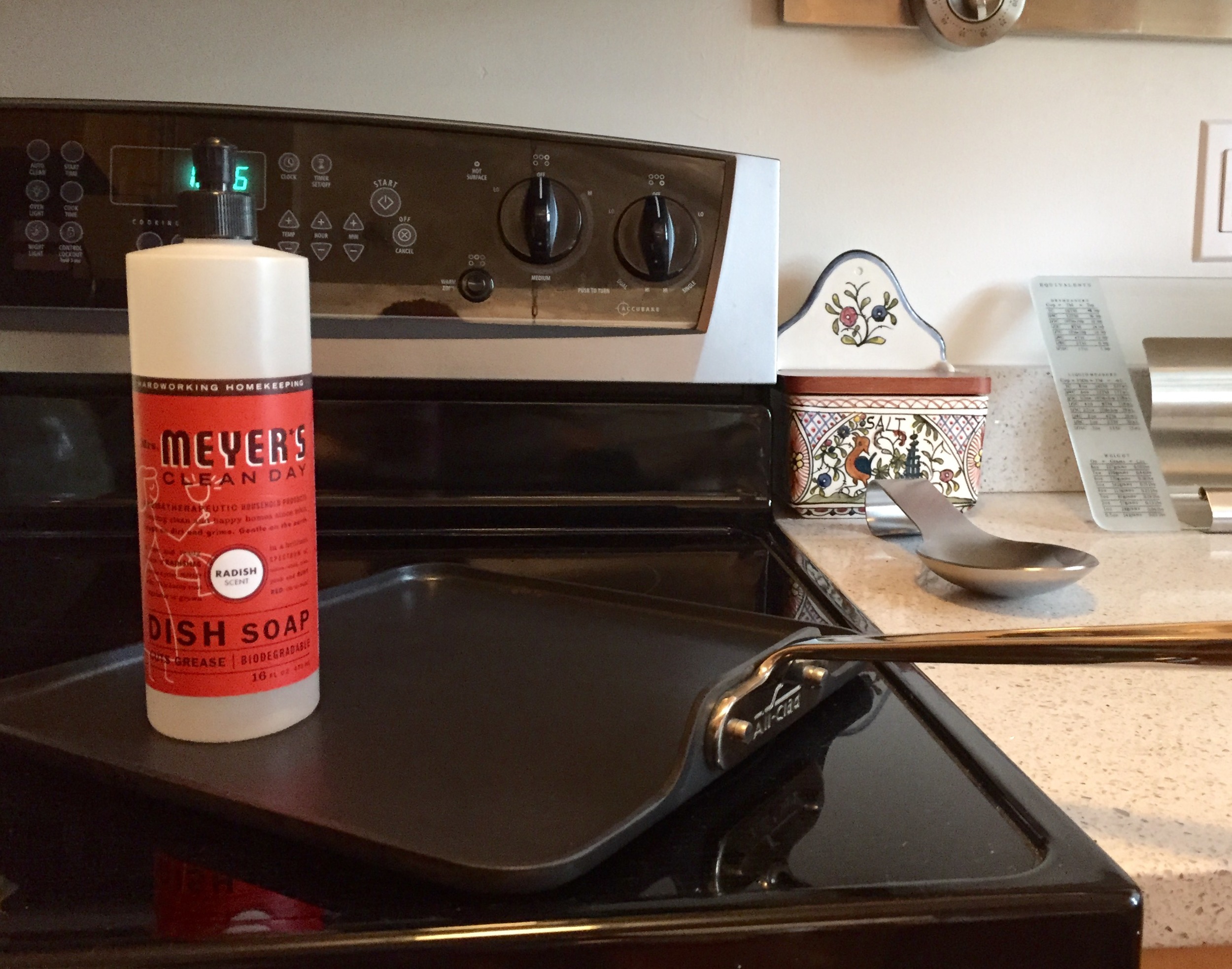When I started my first job after graduate school, one of the first purchases I made for myself was a decent set of pots and pans. It was a 10 piece set of stainless steel cookware for $148.99, which was a fantastic deal. In addition to the price being reasonable, I am so glad I had that first set to practice on (both cooking and cleaning/care) before we invested in a nice set of cookware. While damaging any pan is never the ideal, it's much easier to move on from a less expensive pan than a really nice pan.
When it came time to purchase a nice set of cookware, I will admit that I did spend a slightly excessive amount of time researching the different types of cookware available. I wanted to find a line of cookware that best complimented my lifestyle and cooking frequency. High end cookware is not cheap, so whatever I ended up purchasing need to last a lifetime (or close to it).
Throughout my search process, I learned a lot about the products and even more about what was required to care for each type/line of cookware. It has been two years since we purchased our cookware, I cook quite often and our cookware still looks like new. Below I have compiled a list of my best tips and resources for caring for 4 of the most common types of cookware. Properly caring for cookware requires explanations with a bit more granularity, so this post is a little longer than most but definitely a great resource.
Stainless Steel
Stainless Steel is probably the most commonly used type of cookware. It is durable, easy to use and fairly low maintenance to maintain. There are many different types of stainless steel cookware to choose from (ex. 3 ply, 5 ply, brushed, copper core, etc). For all forms of stainless steel, I have found Bar Keepers Friend (BKF) to be the best cleanser and polisher. BKF comes in two forms, liquid and powder. I prefer the BKF Soft Scrub (liquid version), as it tends to be less abrasive. BKF not only cleanses and polishes stainless steel, but it is equally as effective on copper! Since I have the All Clad Copper Core line of pots and pans which is consists of both copper and stainless steel in each piece of cookware, BKF has been the most effective and efficient cleanser for my cookware. In addition to using BFK, I have also found All Clad's Product Use & Care Manual to be an invaluable resource.
Cast Iron & Enamel Cookware
In addition to my set of All Clad pans, I also have a few pieces of Le Creuset enamel cast iron cookware. I love to use my Le Creuset Dutch Oven for making soups and stews, my grill pan does an excellent job with cooking various meats and my braising dish creates the most flavorful and delicious entrees that are always cooked to perfection.
When it comes to care for Enamel/Cast Iron Cookware, my favorite cleanser is thanks to a suggestion I had received from my friend Kelly. I had been battling the stubborn bacon grease brown stain in the bottom of my enamel braising dish for days. My struggle had randomly come up one day in a conversation with Kelly, who suggested I fill the piece of cookware with hot water, add a 1/4-1/2 scoop of powder OxiClean and let the piece soak for a few hours. Wouldn't you know, it worked like a charm! After a few hours of soaking, I dumped the oxiclean water, then washed the piece of Le Creuset with soapy water and a nylon scrub brush, and voila! The cookware was back to looking pristine! Since OxiClean is my preferred method for cleaning Le Creuset, I keep a small tub of it underneath my kitchen sink for easy access. (*Note-This is the only type of cookware you should ever allow to soak in water).
Copper
Who doesn't love the look of copper cookware? Gorgeous is an adjective that comes to mind when I think of copper cookware. In addition to being beautiful in appearance, copper is an excellent heat conductor, evenly and quickly distributing heat throughout a pan, which is why chefs love to use copper cookware. With that said, there are two reasons why copper is not the most common type of cookware used. The first reason is that because copper is a precious metal, it is the most expensive type cookware on the market today. The second reason is that copper cookware is extremely high maintenace. It tarnishes easily and requires polishing constantly.
On my recent trip to San Francisco, I had the opportunity to experience cooking with Mauviel Copper Cookware at my sister's house. All I can say is that it certainly lives up to it's reputation in every way. There was one morning when I used the small skillet to make eggs and the pan cooked the eggs beautifully! After I had let the pan cool I went to clean it and saw that the entire copper side had been tarnished from a single use! My sister keeps her copper in perfect condition and when I opened her cleaning closet I saw how she achieved copper perfection. Inside her closet was a stack of Wright's Copper Cream (Wright's also makes a fabulous Silver Cream). This copper cream is affordable, non-abrasive and very effective. In addition to Wright's, I have found BKF and even Twinkle to be great copper cleaners.
Teflon/Non-Stick
If the truth be known, I only have one piece of teflon/nonstick anodized cookware. The reason being, this particular type of cookware can only endure a maximum temperature of 450 degrees fahrenheit (which can be very limiting for someone who cooks frequently). My biggest tips when caring for Teflon/Nonstick cookware are:
- Never use metal cooking tools on the surface of Teflon/Nonstick cookware. Metal cooking utensils will scratch the surface, thus compromising the integrity and effectiveness of the non-stick component.
- Hand wash with dish soap, water and a nylon brush. This is a non-stick surface, therefore, you shouldn't require cleansers for advanced stains. Simple soap and water will adequately cleanse your cookware.
Cookware Do's and Dont's
- Do- Your research! Each type of cookware requires different types/levels of care and maintenance. If you don't think you are up to the task of polishing your cookware after each use, Copper might not be the best option for you.
- Do- Handwash your cookware thoroughly after each use.
- Do- Use either vegetable cellulose sponges, nylon wool or nylon scrub brushes to assist in cleaning your cookware.
- Do- Use wooden, plastic and silicone cooking utensils when cooking. If possible, avoid using metal cooking utensils, as they can scratch/damage the surface of your cookware.
- Do- Dry your cookware thoroughly after washing to prevent water spots and rusting.
- Don't- Put your hot pan under running water right after use. Allow your pan to cool completely before cleaning it to avoid warping the pan.
- Don't- Soak your stainless steel cookware in water. Soaking your pans in water can lead to pitting damage that is permanent.
- Don't- Put your pan in the dishwasher. Even if the instructions say "Dishwasher Safe," you are always better off hand washing your cookware to preserve its integrity and increase the longevity.
- Don't- use steel wool to clean a stubborn stain out of any pan. While you may succeed at removing the stain, you will scratch/damage the pan's interior which could affect future cooking.
As I have mentioned in this post, cookware is not an inexpensive purchase so it is important to make sure you select a set that can fit your lifestyle. If you want a low maintenance set of cookware, I would recommend Cast Iron/Enamel or Teflon. However, if you don't mind a little extra cleaning, then maybe stainless steel would be the best choice for you. My goal with this post is to equip you with the knowledge to care for whatever type of cookware you select or may already own. If you have any questions regarding the information in this post or care tips beyond this post, you can always contact me at redefiningdomestics@gmail.com. I am always happy to answer any questions you might have regarding all things domestic!
